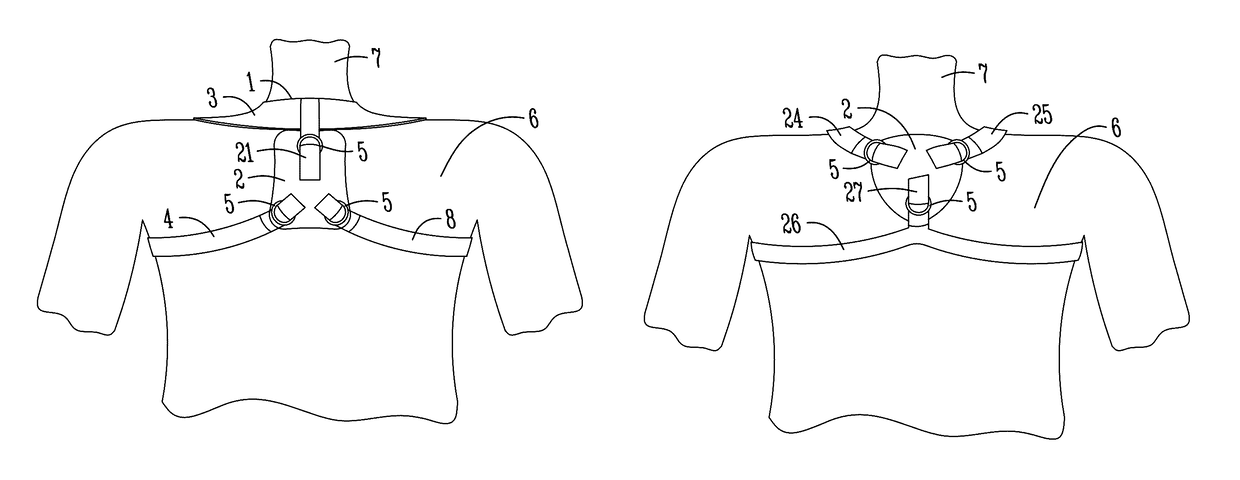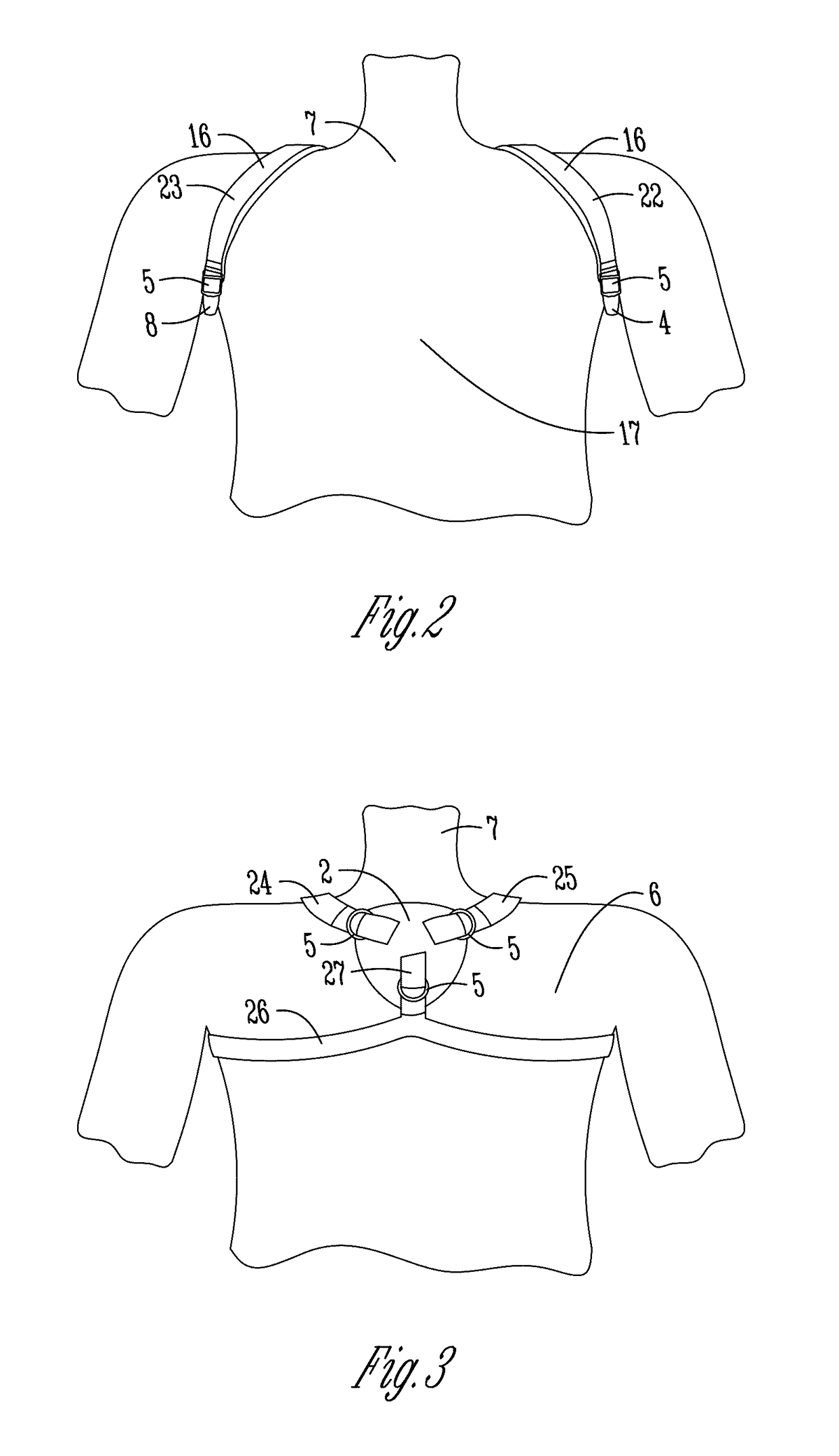Orthopedic clavicle brace
a clavicle brace and orthopaedic technology, applied in the field of orthopaedic clavicle brace, can solve the problems of substantial practical disadvantage for users, user's inability to adjust the tightness or looseness of the shoulder strap, and users of prior art shoulder braces, etc., to achieve easy adjustment, easy application and removal, and promote healing and support
- Summary
- Abstract
- Description
- Claims
- Application Information
AI Technical Summary
Benefits of technology
Problems solved by technology
Method used
Image
Examples
Embodiment Construction
[0017]The orthopedic clavicle brace (1) of the present invention and method for use is for giving support to a user's shoulders to prevent injury and to promote healing of a dislocated, injured or fractured clavicle. A preferred embodiment of the brace (1) includes: a clavicle brace support body (2); a shoulder strap (3); a first axilla strap (4); a second axilla strap (8); and, adjustable fasteners (5). See FIG. 1. The clavicle brace support body (2) is configured to position substantially over the upper back (6) of the user (7). The shoulder strap (3), T-shaped and having three end portions (21, 22, 23), is attached to the upper portion of the body (2) by a proximal first end portion (21) of the strap (3). Portions of the shoulder strap (3) extending around the neck and over the shoulders of the user (7) are typically wider than the first end portion (21) of the shoulder strap (3) coupled to the body (2). This extra width provides additional support to the injured clavicle and nec...
PUM
 Login to View More
Login to View More Abstract
Description
Claims
Application Information
 Login to View More
Login to View More - R&D
- Intellectual Property
- Life Sciences
- Materials
- Tech Scout
- Unparalleled Data Quality
- Higher Quality Content
- 60% Fewer Hallucinations
Browse by: Latest US Patents, China's latest patents, Technical Efficacy Thesaurus, Application Domain, Technology Topic, Popular Technical Reports.
© 2025 PatSnap. All rights reserved.Legal|Privacy policy|Modern Slavery Act Transparency Statement|Sitemap|About US| Contact US: help@patsnap.com



